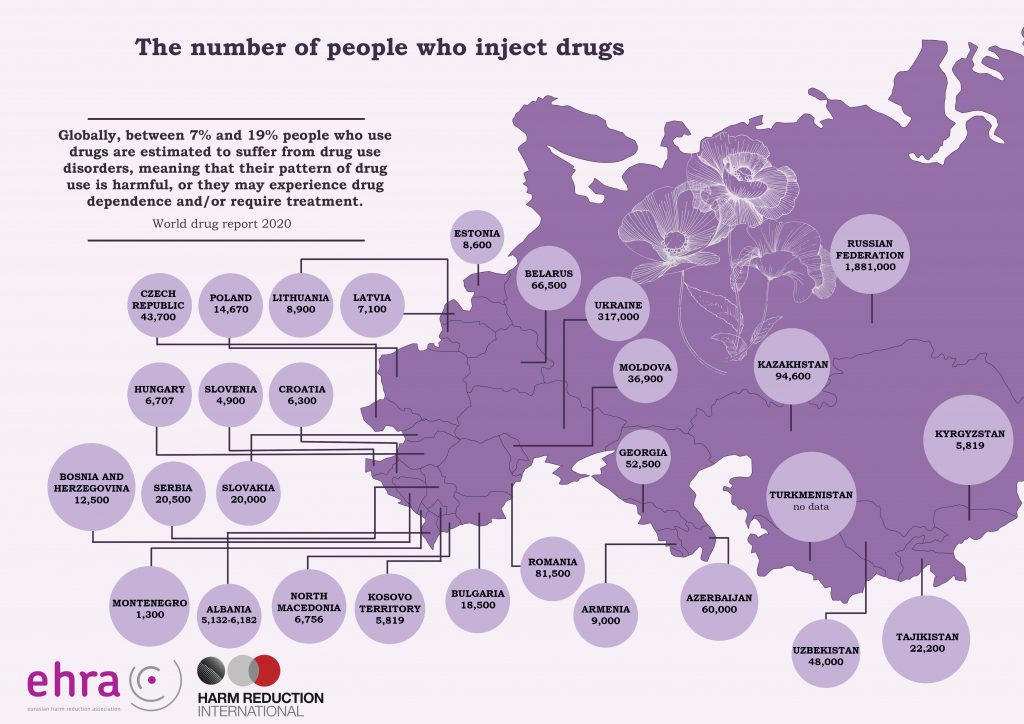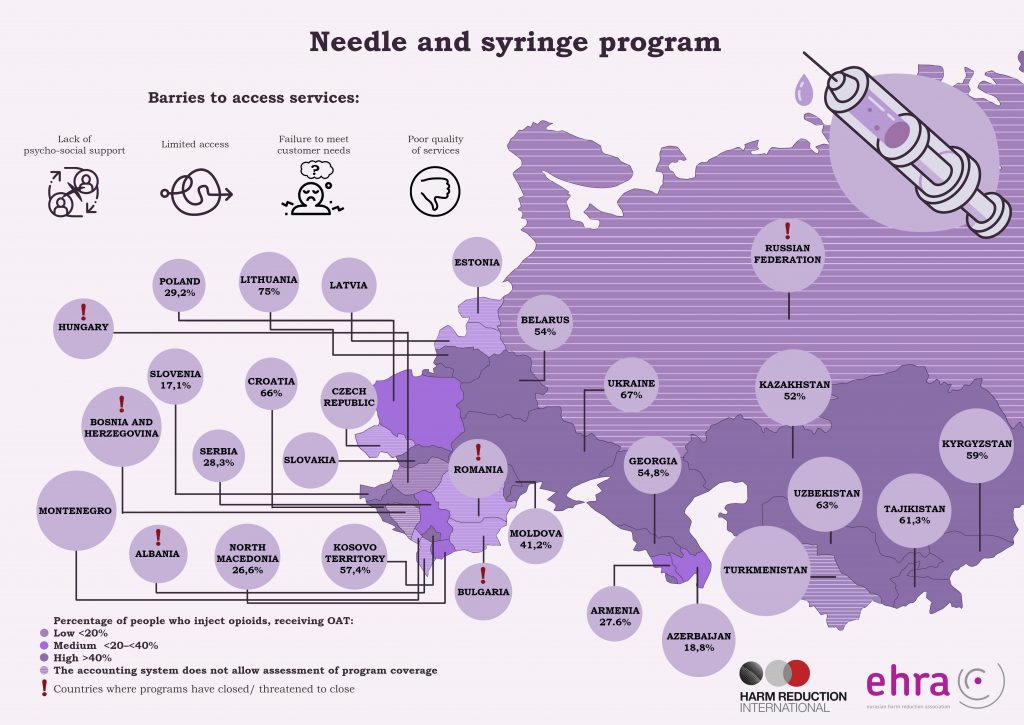November 27, 2020, Vilnius
The Eurasian chapter of the Global State of Harm Reduction 2020 was presented and published today in Russian language.
This is the seventh edition of the Global State of Harm Reduction Report 2020, prepared by the Harm Reduction International, now in the year when public health took a leading position in the world news. COVID-19 and response measures introduced around the world continue to disrupt our lives. The report provides the most up-to-date information on existing programs, the situation with HIV, viral hepatitis and tuberculosis among people who use drugs, as well as analysis of harm reduction programs in the context of the COVID-19 epidemic. The parts of the report describing the situation in the Central, Eastern Europe and Central Asia region were gathered and summarized by the Eurasian Harm Reduction Association (EHRA).
A short summary of the report is presented to the public during an online discussion today. In total, the region is home to approximately 3 million people who inject drugs, 66% of whom are living in Russia and 77% in Russia and Ukraine together.

Syringe exchange programs operate in 27 of the 29 countries in the region, except Turkmenistan and Bulgaria. Unfortunately, the programs experience problems in many countries, particularly with sustainable funding, especially in transitioning from donor to domestic funding sources. The report shows challenges in unit cost, scope and quality of harm reduction services over the past two years.

Opioid Agonist Treatment (OAT) programs are implemented in 26 of the 29 countries in the region, except Russia, Uzbekistan and Turkmenistan. Unfortunately, we can state that most people who use drugs in the region live in countries where OAT programs are prohibited. In the transition of OAT programs from donor support to domestic funding, the biggest challenges are the availability and coverage, quality, and sustainability of program funding.

The key problem areas for harm reduction implementation in the CEECA region are as follows:
- Criminalization
- Decrease in funding
- Lack of political support
- Pressure on civil society
As a result, we see low coverage of harm reduction services and poor quality of programs.
The report provides detailed information on the situation with HIV, TB, hepatitis, and COVID-19 response programs for people who use drugs in the CEECA region. It provides an analysis of the programs, as well as challenges in accessing services.
The report provides an opportunity to learn about innovative harm reduction practices being implemented in the countries of the region. Substitution therapy for amphetamine users, kits for smoking and oral use, drug checking, safe consumption rooms, harm reduction for women who use drugs and for new psychoactive substance users, as well as for those who use drugs in Chemsex practices (LGBTQI, sex workers) are all being actively implemented in the region by the community- and harm reduction organizations.
EHRA sincerely thanks its colleagues who helped us prepare this report through individual interviews and verification of data from countries and the region.
